Wednesday, March 18th 2009

Radeon HD 4890 3DMark Performance Revealed
Taiwan-based English tech website OC Heaven has disclosed some performance figures of the upcoming ATI Radeon HD 4890 1 GB graphics accelerator. The tests run are two of the most popular synthetic benchmarks: 3DMark Vantage and 3DMark06. Also disclosed, rather verified, are the card's clock speeds as read by ATI Catalyst Control Center and GPU-Z. The test bed, from what the 3DMark06 window shows, consists of an Intel Core i7 920 CPU running at 2.66 GHz, coupled with 3 GB of system memory. In 3DMark06, the HD 4890 accelerator secured a score of 16,096 points, with SM 2.0 score of 6155, HDR/SM 3.0 score of 7521, and CPU score of 4836. In 3DMark Vantage, it secured a score of P10996. Catalyst Control Center reveals the card's memory bandwidth to be 124.8 GB/s, up from the 111 GB/s on its predecessor, the HD 4870. The early driver in use makes provides "RV790" as the device string to GPU-Z.
Update (03/19):Ukrainian website Overclockers.com.ua has come up with a more comprehensive 3DMark shootout between cards in this segment. Radeon HD 4890 and HD 4890 CrossFireX are part of the comparison. The testers used an Intel Q6600 CPU running on an X48 motherboard with 4 GB of memory. The article can be read (Google-translated to English) here.
Sources:
OC Heaven, Overclockers.com.ua
Update (03/19):Ukrainian website Overclockers.com.ua has come up with a more comprehensive 3DMark shootout between cards in this segment. Radeon HD 4890 and HD 4890 CrossFireX are part of the comparison. The testers used an Intel Q6600 CPU running on an X48 motherboard with 4 GB of memory. The article can be read (Google-translated to English) here.
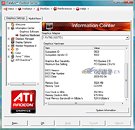
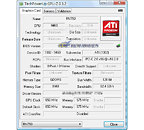
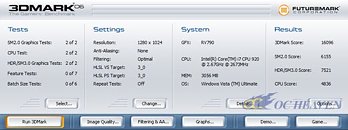
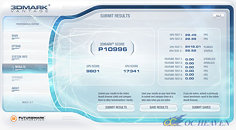
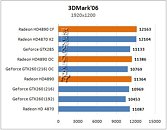

103 Comments on Radeon HD 4890 3DMark Performance Revealed
I'm pretty neutral to the whole AMD/Nvidia thing but I see this as reallity, Physx is going to be just as mainstream as Itanium was (and is) for Intel. No matter how much Nvidia tries to push the matter or promote it.
The good news is HD 4890 CrossFire should outperform GTX 295 whilst being the cheaper solution (eventually) a-la 2x GTX 260 vs. HD 4870 X2 in those days.I don't :)
Agreed. From analysis of 4830 performance, it is quite clear that the bottleneck is ROP and TMU not shader.
HOWEVER, scaling shaders is much much easier than redesigning the ROP/TMU stages. It's pimping shader statistics because it is the easiest and cheapest modification.
*****
I hope w1z will benchmark this against the RV770 with identical shader clocks. That way we can see if there really has been any shader optimisations, or if, in reality, the RV790 is *only* an overclocked RV770 (with marginal internal layout changes to avoid hotspots etc.)
My "sources" say that shader count will become more and more important in the coming months. Disclaimer: My source is an AMD shareholders letter. Which Iv used to wipe my ass with in the past.
All ATI cards start slow thanks to drivers so give it a month or two and it'll be quite a show!:toast:
Based on a Q9450 @ 3.60Ghz (testbed appears to be similar between video cards):
4870............ (750/900): P7715
4870............ (850/975 @ 3.0Ghz unless that was a typographical error): P8696
HD4890......... (850/975): P9801
GTX280 (600/1300/1100): P9367
GTX285 (650/1475/1240): P10436
DailyTech believes the drivers are not optimized and they will benchmark the card this weekend with another set of drivers. Hopefully we will see some game benchmarks soon.
4890 top, 4870 bottom...been seen in a few threads already around the net.
An RV770 from our reviews:
The RV790:
Look at the arrangement of the components on the package, around the die.
So, it's 6-pin after all.
Fuds dispelled so far:
It is not a 8+6 pin design specifically
Die size is not the same therefore not just a higher clocked 4870
done by someone else
more to come...
The RV790 is a 'reworked' RV770, not an RV770 with higher clocks. So when one says 'it's just an overclocked HD 4870", it should be taken in context of the point that both GPUs have near-identical specs (so far), and not literally.
Until the card is release we have to take all this pre-released information with a grain of salt.